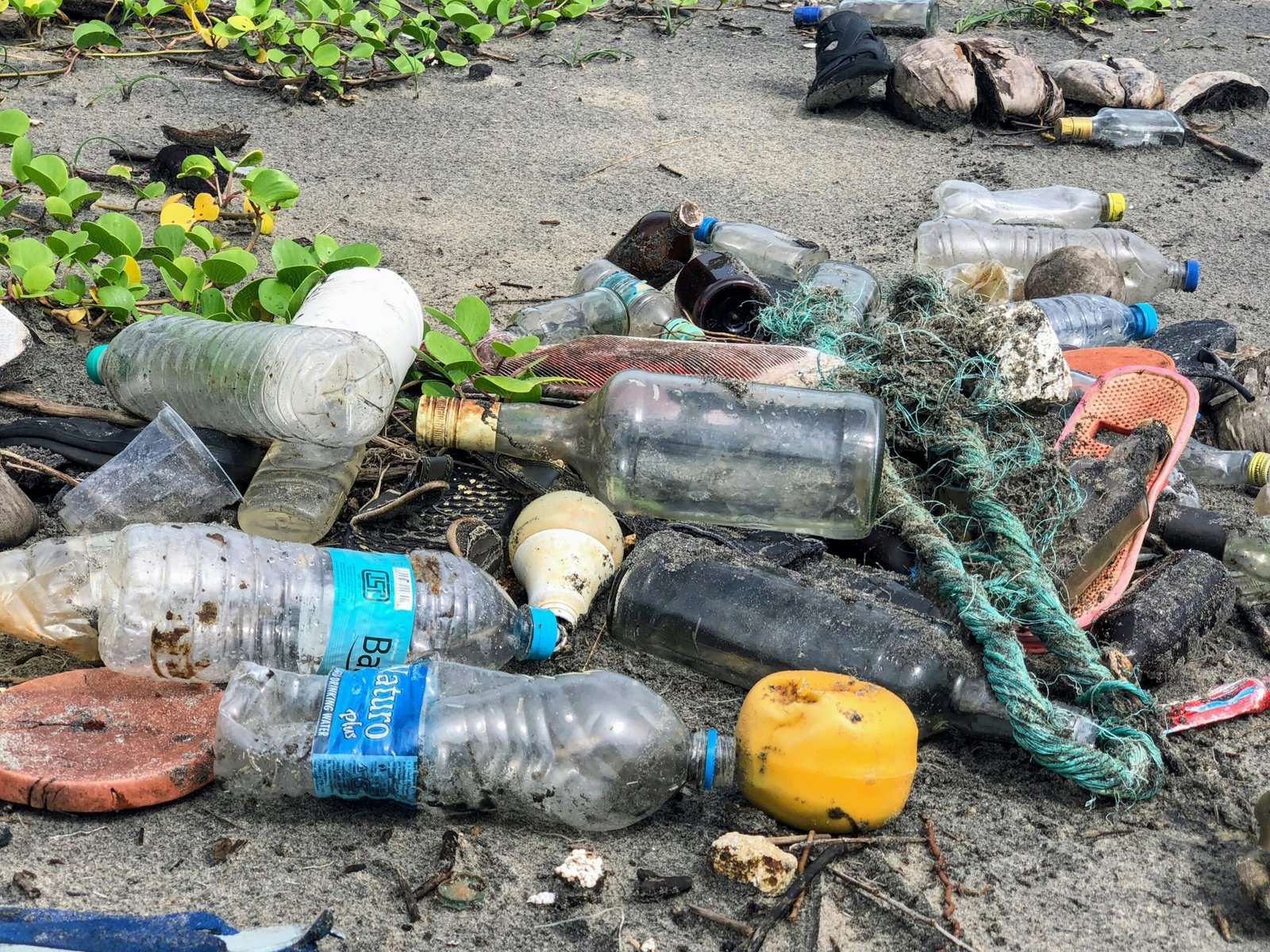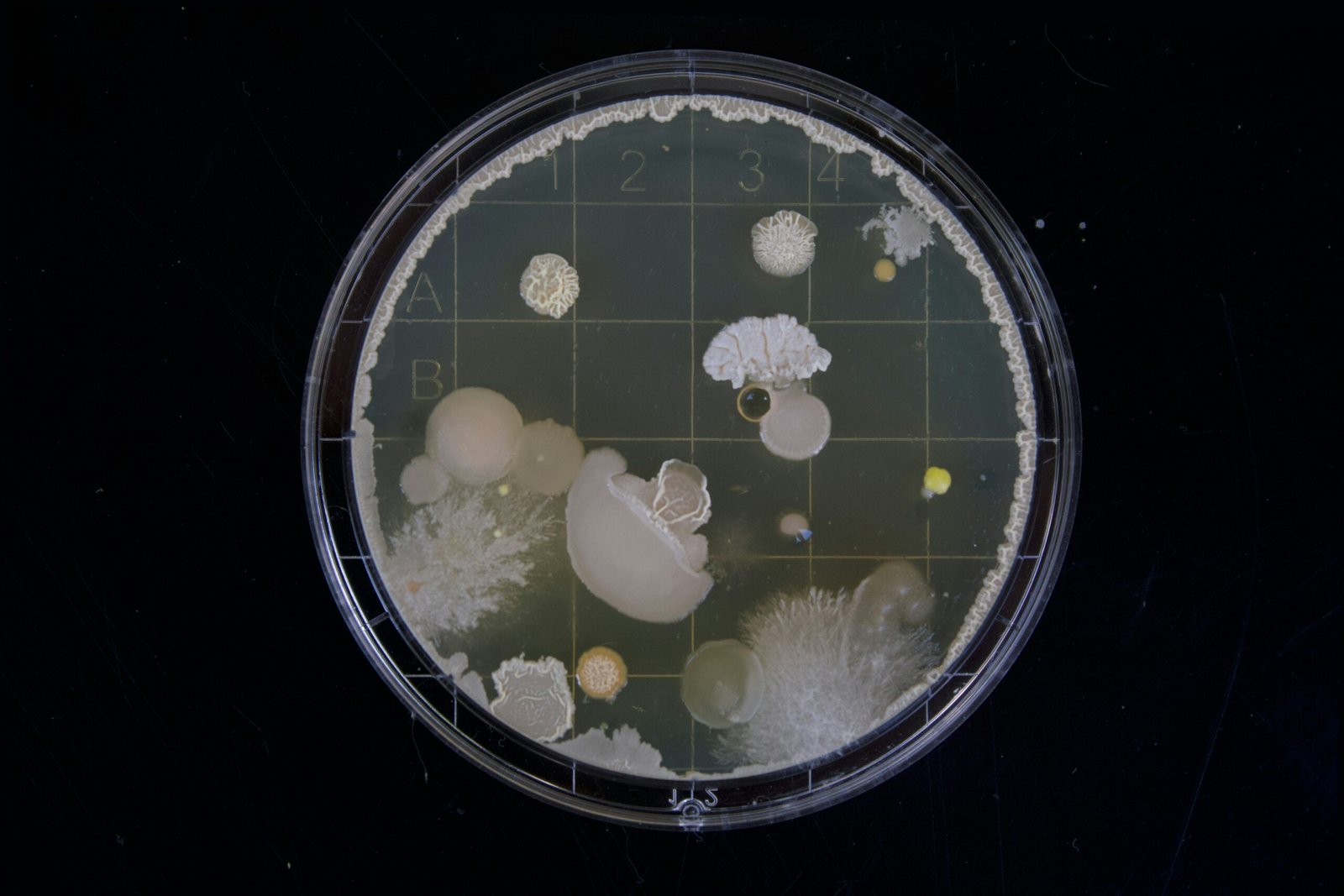Introduction to Microbes and Lower Cryptogams
Microbes and lower cryptogams are pivotal yet oftentimes overlooked constituents of ecosystems. Microbes, primarily encompassing bacteria, viruses, fungi, and protozoa, are microscopic organisms that perform a multitude of vital roles within ecological systems. These entities, although invisible to the naked eye, form the backbone of many biogeochemical processes. On the other hand, lower cryptogams, which include algae, mosses, liverworts, and lichens, represent non-vascular plants that thrive in moist environments and contribute extensively to ecological stability and productivity.
Microbes are classified based on their morphology, genetic makeup, and metabolic pathways. Bacteria, characterized by their simple cell structure lacking a nucleus, facilitate nutrient cycling, decomposition, and even some symbiotic relationships with plants. Fungi, another significant microbial group, decompose organic matter, releasing nutrients back into the soil. Viruses, despite their simplistic and non-living nature, exert considerable influence on microbial populations and ecological dynamics. Protozoa, with their diverse morphological characteristics, often act as both predators and prey within microbial food webs.
Lower cryptogams, with their primitive vascular systems, are primarily categorized based on their unique reproductive structures and ecological functions. Algae, predominantly aquatic, perform photosynthesis, contributing substantially to primary production and oxygen generation. Mosses and liverworts, which are non-vascular land plants, play critical roles in soil formation and moisture retention. Lichens, a remarkable symbiosis between fungi and algae, are pioneers in colonizing harsh environments, facilitating soil stabilization and nutrient cycling.
The ecological importance of microbes and lower cryptogams is profound. These organisms are integral to nutrient cycling, soil health, and ecosystem resilience. They engage in processes such as nitrogen fixation, decomposition, and symbiotic relationships that underpin the functioning of both terrestrial and aquatic ecosystems. Understanding the roles and contributions of these organisms is essential in appreciating the complexity and interconnectedness of ecological systems.
Microbial Diversity and Functions
Microbes, encompassing bacteria, archaea, fungi, and viruses, represent an extraordinary spectrum of biodiversity within ecosystems. These microscopic organisms play indispensable roles, contributing significantly to ecological stability and productivity. The diversity of microbes is vast, with each group performing unique yet interconnected functions that sustain ecosystem health and resilience.
Bacteria are paramount in nutrient cycling. They are actively involved in processes such as nitrogen fixation, nitrification, and denitrification. Nitrogen-fixing bacteria convert atmospheric nitrogen into forms usable by plants, thereby facilitating primary production. Similarly, nitrifying bacteria oxidize ammonia to nitrate, while denitrifying bacteria revert nitrate to nitrogen gas, completing the nitrogen cycle and stabilizing the ecosystem’s nutrient balance.
Archaea, though less understood, also play crucial roles, particularly in extreme environments. They thrive in harsh conditions like high temperatures, salinities, or acidities, contributing to biogeochemical cycles. Methanogenic archaea, for example, are vital in anaerobic decomposition, producing methane as a byproduct, which is a key greenhouse gas and an energy source.
Fungi, including molds, yeasts, and mushrooms, are pivotal decomposers. They break down complex organic materials, such as lignin and cellulose, into simpler compounds that can be reabsorbed by plants and other organisms. This decomposition process recycles essential nutrients, maintaining soil fertility and promoting plant growth. Mycorrhizal fungi form symbiotic relationships with plant roots, enhancing water and nutrient absorption, and thereby supporting overall plant health and productivity.
Viruses, although often seen as pathogens, also hold functional significance in ecosystems. They regulate microbial populations through infections, known as lysogenic and lytic cycles, thus influencing microbial community dynamics and nutrient flows. Additionally, viral lysis releases organic matter, fueling microbial loops and supporting higher trophic levels.
Microbes exhibit remarkable adaptability and resilience, enabling them to thrive in diverse environmental conditions. Their ability to survive extreme environments, rapidly evolve, and exchange genetic material ensures their continuous participation in ecological processes. This adaptability underpins their critical roles in mitigating ecological disruptions and contributing to ecosystem resilience against environmental changes.
Roles of Microbes in Soil Health and Fertility
Microbes are indispensable agents in the realm of soil health and fertility, serving myriad functions that underpin ecosystem vitality. One of the pivotal roles these microorganisms play is in nitrogen fixation. Nitrogen-fixing bacteria, such as Rhizobium species, convert atmospheric nitrogen into a form accessible to plants, thereby bridging a critical gap in the nitrogen cycle. This process not only replenishes soil nitrogen but also significantly enhances plant growth and productivity.
In tandem with nitrogen fixation, organic matter decomposition is another quintessential function performed by soil microbes. Through the breakdown of dead plant and animal material, microbes recycle essential nutrients back into the soil, promoting a dynamic and fertile environment. This decomposition process is facilitated by bacteria and fungi, which enzymatically degrade complex organic compounds into simpler molecules that can be readily assimilated by plants and other soil organisms.
Further contributing to soil health, microbes are instrumental in nutrient mineralization. This process involves the transformation of organic nutrients into inorganic forms, making them available for plant uptake. Microorganisms such as Pseudomonas and Bacillus species play key roles in mineralizing phosphorus and other essential nutrients, thereby fortifying nutrient cycles and enhancing soil fertility.
Bioremediation stands out as a remarkable microbial function with profound ecological implications. Certain microbes possess the unique ability to degrade harmful pollutants and contaminants in the soil, thereby ameliorating polluted environments. This natural detoxification process is pivotal for maintaining soil health, especially in areas affected by industrial and agricultural activities.
Moreover, microbes establish symbiotic relationships with plants, markedly enhancing nutrient uptake and growth. Mycorrhizal fungi, for instance, form mutualistic associations with plant roots, extending their network and aiding in the absorption of water and minerals. Such symbioses are critical for plant health and can enhance resistance to environmental stresses.
Through nitrogen fixation, organic matter decomposition, nutrient mineralization, and bioremediation, along with forming symbiotic relationships, microbes perform essential roles that maintain and enhance soil health and fertility. Their intricate and dynamic functionalities underscore their importance in sustainable ecosystem management.
Introduction to Lower Cryptogams: Algae, Mosses, and Lichens
Lower cryptogams, which include algae, mosses, and lichens, represent a critical and often overlooked segment of terrestrial and aquatic ecosystems. These non-vascular plants and plant-like organisms have unique characteristics, life cycles, and habitats that make them indispensable ecological constituents. Algae, mosses, and lichens showcase diversity in form and function, contributing profoundly to the stability and productivity of their respective environments.
Algae, found in a myriad of habitats ranging from oceans to freshwater ecosystems, play a fundamental role as primary producers. They harness sunlight via photosynthesis to convert carbon dioxide into organic compounds, forming the base of the food web. Algal diversity spans microscopic phytoplankton to multicellular seaweeds, each playing a vital part in the regulation of atmospheric gases and the production of oxygen.
Mosses, primarily terrestrial cryptogams, thrive in moist, shaded environments such as forests and wetlands. Their life cycle alternates between a dominant gametophyte stage and a sporophyte stage, facilitating both as and s reproduction. Mosses significantly contribute to ecosystem functions by retaining soil moisture, reducing erosion, and creating habitats for microfauna. Moreover, they serve as bioindicators of environmental health, reflecting changes in moisture levels and air quality.
Lichens, unique symbiotic associations between fungi and photosynthetic partners (usually algae or cyanobacteria), inhabit some of the most extreme environments on Earth, from arctic tundras to arid deserts. Their resilience and ability to colonize bare substrates make them pioneer species in ecological succession. Lichens play essential ecological roles by contributing to nutrient cycling through nitrogen fixation, promoting soil formation, and providing food and shelter for various organisms.
The significance of lower cryptogams transcends their individual contributions. Collectively, they play integral roles in maintaining ecosystem balances, enhancing biodiversity, and supporting overall ecosystem health and resilience. Understanding their unique characteristics and ecological functions allows us to appreciate the depth of their impact on the natural world.
Ecological Roles of Algae in Aquatic and Terrestrial Systems
Algae play pivotal roles in both aquatic and terrestrial ecosystems, serving as one of the foundational components of environmental sustainability. In aquatic ecosystems, algae are predominant primary producers, converting sunlight into biochemical energy through the process of photosynthesis. This not only supports their own growth but also generates oxygen, which is crucial for the survival of aquatic organisms. Due to the vast coverage of water bodies by algae, these organisms contribute significantly to global oxygen generation, thereby supporting life on a planetary scale.
Moreover, algae serve as a fundamental food source for a multitude of aquatic organisms, ranging from small zooplankton to larger fish species. Through various trophic levels in the food web, the energy captured by algae is transferred up the chain, maintaining the ecological balance. In terrestrial systems, certain algae form symbiotic relationships with fungi to create lichens, which can colonize barren landscapes and contribute to soil formation through weathering of rocks and organic matter accumulation.
Algae also play a critical role in nutrient cycling, particularly in aquatic environments. They absorb nutrients such as nitrogen and phosphorus from water, helping to regulate nutrient concentrations and prevent harmful algal blooms, which can lead to eutrophication and subsequent loss of aquatic life. Furthermore, by absorbing excess nutrients and contaminants, algae contribute to the purification of water, enhancing overall water quality.
In terrestrial ecosystems, algae contribute to soil fertility by fixing atmospheric nitrogen, further supporting plant growth. The presence of algae in soil ecosystems influences the microbial community structure and overall soil health, promoting biodiversity.
In summary, algae are indispensable to ecosystem functioning through their roles in primary production, oxygen generation, and as food sources. Their contributions to water quality and nutrient cycling underscore the importance of algae in maintaining ecological balance and supporting life across diverse habitats.
Mosses: Ecosystem Engineers
Mosses, often underestimated in their ecological significance, play a pivotal role as ecosystem engineers. These non-vascular plants possess unique abilities to retain moisture, thereby contributing significantly to the hydrological stability of their environments. By acting as a natural sponge, mosses absorb and hold water, which helps to maintain humidity levels and supports various life forms during dry spells.
In addition to their moisture-retentive properties, mosses are instrumental in preventing soil erosion. Their dense mats create a protective layer over the soil, reducing the impact of raindrop splash and minimizing the displacement of soil particles. This characteristic is particularly crucial in forest ecosystems and other areas prone to erosion, ensuring the stability of the landscape and the integrity of the soil structure.
Mosses also play a vital role in creating and maintaining habitats for other organisms. By forming dense and continuous carpets, they provide a microhabitat for a myriad of small invertebrates, fungi, and microorganisms. These habitats offer shelter, food resources, and breeding grounds, fostering biodiversity within the ecosystem.
Furthermore, mosses contribute immensely to the development of soil in barren landscapes. Through the process of biocrust formation, mosses colonize bare substrates, initiating soil creation by trapping dust particles, organic matter, and microbial life. Over time, these actions lead to the accumulation of organic-rich soil layers, facilitating the establishment of higher plants and enhancing the overall fertility of the habitat.
Another crucial function of mosses lies in their ability to sequester carbon. Through photosynthesis, they absorb carbon dioxide from the atmosphere and store it in their biomass. This makes mosses vital players in the global carbon cycle and key contributors to mitigating the effects of climate change by reducing atmospheric CO2 concentrations.
In essence, mosses’ multifaceted contributions as ecosystem engineers underline their importance in maintaining ecological balance, supporting biodiversity, enhancing soil development, and aiding in climate regulation. Their presence and health are essential in fostering resilient ecosystems across various landscapes.
Lichens: Indicators of Environmental Health
Lichens, complex organisms formed by symbiotic relationships between fungi and algae, are critical bioindicators of environmental health. Their unique ability to absorb water, nutrients, and gases from the atmosphere makes them excellent sentinels of air quality. Lichens can accumulate heavy metals, sulfur dioxide, and nitrogen compounds from their surroundings, thus reflecting pollutant levels and offering valuable insights into the health of ecosystems.
Given their slow growth and long lifespan, lichens provide a reliable long-term record of environmental changes. Scientists have been using lichens to monitor air pollution and its effects since they are particularly sensitive to atmospheric contaminants. The presence or absence of certain lichen species signifies changes in air composition, enabling environmentalists to detect areas of concern and track the efficacy of pollution control measures.
Apart from their role in air quality monitoring, lichens significantly contribute to nutrient cycling and soil formation. Lichens are among the first organisms to colonize barren terrains, such as exposed rock surfaces. Over time, they secrete acidic compounds that weather rocks, gradually breaking them down into soil particles. This pioneering action creates soil that allows other plant forms to take root, facilitating ecological succession in ecosystems.
Furthermore, the symbiotic relationship within lichens highlights the interconnectedness of various life forms. The algae component within lichens engages in photosynthesis, creating organic nutrients that sustain the fungal partner. In return, the fungus offers structural support and protection from harsh environmental conditions. This mutualistic interaction exemplifies the resilience and adaptive strategies within ecosystems, emphasizing the importance of microbial associations in maintaining ecological balance.
In summary, lichens serve as invaluable indicators of environmental health due to their pollutant accumulation capabilities and susceptibility to changes in air quality. Their contributions extend beyond monitoring to include pivotal roles in nutrient cycling, soil formation, and exemplifying symbiotic relationships within ecosystems. Understanding and preserving lichens is essential for safeguarding ecological integrity and promoting sustainable environmental practices.
Conclusion: Integrating the Roles of Microbes and Lower Cryptogams
Microbes and lower cryptogams play pivotal roles in the complex web of ecological interactions that sustain ecosystem health and stability. These organisms, despite their often microscopic or overlooked presence, contribute fundamentally to nutrient cycling, soil formation, and the overall balance of natural processes. By breaking down organic matter, microbes facilitate nutrient availability and promote soil fertility. Similarly, lower cryptogams, such as lichens and bryophytes, significantly influence water retention, mineral accumulation, and habitat creation, which in turn support a wide array of higher life forms.
The interconnectedness of microbes and lower cryptogams cannot be overstated. Their symbiotic relationships, such as those between fungi and algae in lichens, exemplify mutual dependencies that enhance ecosystem resilience. For instance, lichens stabilize soil surfaces and capture atmospheric pollutants, while microbes decompose organic materials, releasing essential nutrients that sustain plant growth. This harmonious interplay underscores the importance of recognizing and preserving the diversity of microbial communities and lower cryptogams in various habitats.
Future research should aim to deepen our understanding of these intricate relationships and explore the potential applications of microbes and lower cryptogams in environmental conservation. Innovative strategies, such as bioremediation and habitat restoration, could benefit significantly from harnessing the natural capabilities of these organisms. Bioremediation utilizes microbes to detoxify contaminated environments, while lower cryptogams can contribute to the establishment of stable vegetation in degraded landscapes. Such applications not only highlight the ecological value of these organisms but also offer practical solutions for addressing contemporary environmental challenges.
In conclusion, the ecological roles of microbes and lower cryptogams are indispensable for the health and longevity of ecosystems. Their collective impact is a testament to the intricate and finely balanced nature of ecological networks. By acknowledging and integrating their contributions, we can foster a more comprehensive approach to sustainable environmental management and conservation efforts, ensuring that ecosystems continue to thrive for generations to come.





















+ There are no comments
Add yours